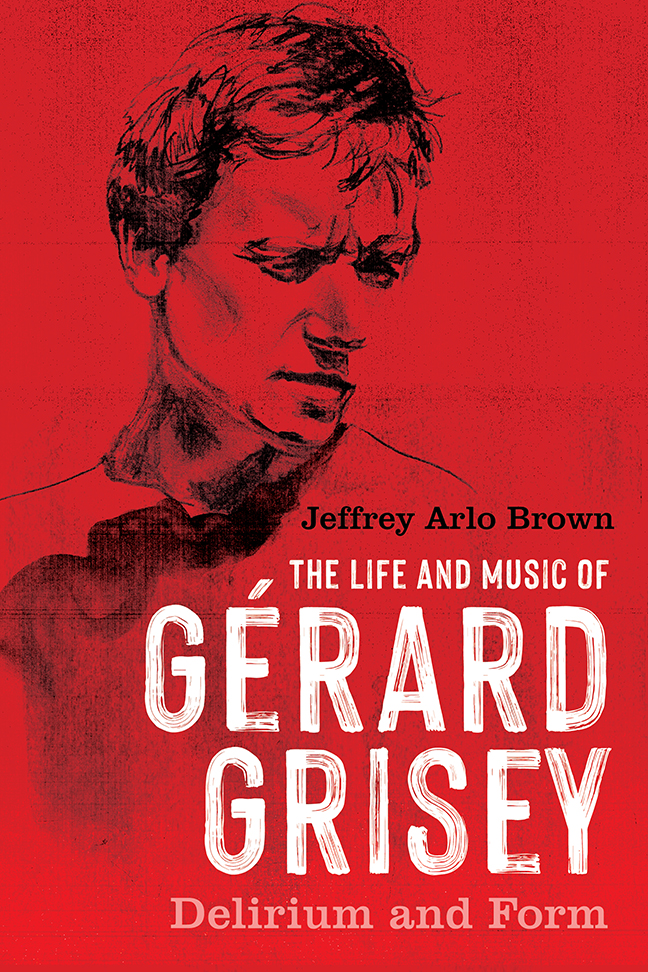Book contents
- Frontmatter
- Contents
- List of Illustrations
- Acknowledgments
- One The Lost Voice (1946–61)
- Two The Carnal Shell (1961–65)
- Three The Rhythm of Love (1965–67)
- Four Exchange Beyond Language (1968–70)
- Five The Silence that Attracts (1970–72)
- Six The Sensual Embrace (1972–74)
- Seven Ultimate Fusion (1974–78)
- Eight Astarte (1978–79)
- Nine Extreme Pleasure, Extreme Pain (1980–82)
- Ten The Grains of Sound (1982–86)
- Eleven Absolute Love (1986–88)
- Twelve Seduced by the Star (1988–91)
- Thirteen Suggestions of the Infinite (1991–96)
- Fourteen Nut (1996–98)
- Fifteen Berceuse
- Appendix: Recordings of Music by Gérard Grisey
- Bibliography
- Index
Three - The Rhythm of Love (1965–67)
Published online by Cambridge University Press: 17 December 2023
- Frontmatter
- Contents
- List of Illustrations
- Acknowledgments
- One The Lost Voice (1946–61)
- Two The Carnal Shell (1961–65)
- Three The Rhythm of Love (1965–67)
- Four Exchange Beyond Language (1968–70)
- Five The Silence that Attracts (1970–72)
- Six The Sensual Embrace (1972–74)
- Seven Ultimate Fusion (1974–78)
- Eight Astarte (1978–79)
- Nine Extreme Pleasure, Extreme Pain (1980–82)
- Ten The Grains of Sound (1982–86)
- Eleven Absolute Love (1986–88)
- Twelve Seduced by the Star (1988–91)
- Thirteen Suggestions of the Infinite (1991–96)
- Fourteen Nut (1996–98)
- Fifteen Berceuse
- Appendix: Recordings of Music by Gérard Grisey
- Bibliography
- Index
Summary
In November 1965, Grisey moved to Paris. His new living quarters were at 20 rue de Monceau, in the eighth arrondissement. This address housed a Catholic lycée for children ages eleven to nineteen called Sainte-Marie de Monceau, now Lycée Fénelon Sainte-Marie. Grisey was almost certainly connected to the institution through his Marianist schooling in Belfort and was granted a tiny room of about sixty-five square feet and regular meals in exchange for doing small chores like sweeping classrooms, erasing blackboards, and washing dishes on the weekends for the nuns who lived on the premises (the lay teachers and the students lived elsewhere). On the outside, the building was a drab and dirty white, but at least it had a large communal balcony, and there was a piano in the dining room that he could practice on. A photograph from this period shows the slender, fine-featured young composer sitting at a desk, his chair rubbing up against the bed, with pictures of Greek antique art on the walls, a record player, and at least one LP with music by a Boulanger sister. The school was centrally located, and, for a boy from a working-class family, free room and board in Paris were not to be taken for granted.
On February 13, 1966, after a year and a half of silence, Grisey returned to writing in his “old journal.” At the Conservatoire National Supérieur de Musique he primarily attended courses in écriture. Though taught in many conservatories, Paris has undoubtedly one of the most difficult écriture programs in the world. Grisey would focus on this musical scaffolding for the next three years. His routine was rigorous, his focus almost single-minded: “I get up early and I go to Mass when I’m able. Then from 8:30 to 11:30, I compose. In the afternoon: accordion, piano, reading, studying scores, counterpoint, etc. In the evening: letters and listening to records.” On March 9, 1966, he admonished himself to “Work. Work, yes, work like the bees, with application, without looking to the right nor to the left, without comparing myself with others, without waiting to see the result nor what is left to do.” Evidently, Grisey found the difficulty of his studies at the Conservatoire less intimidating than invigorating.
As a young teenager, Grisey was preoccupied by his nascent sexuality, but also by religious ideals of purity.
- Type
- Chapter
- Information
- The Life and Music of Gérard GriseyDelirium and Form, pp. 28 - 45Publisher: Boydell & BrewerPrint publication year: 2023

